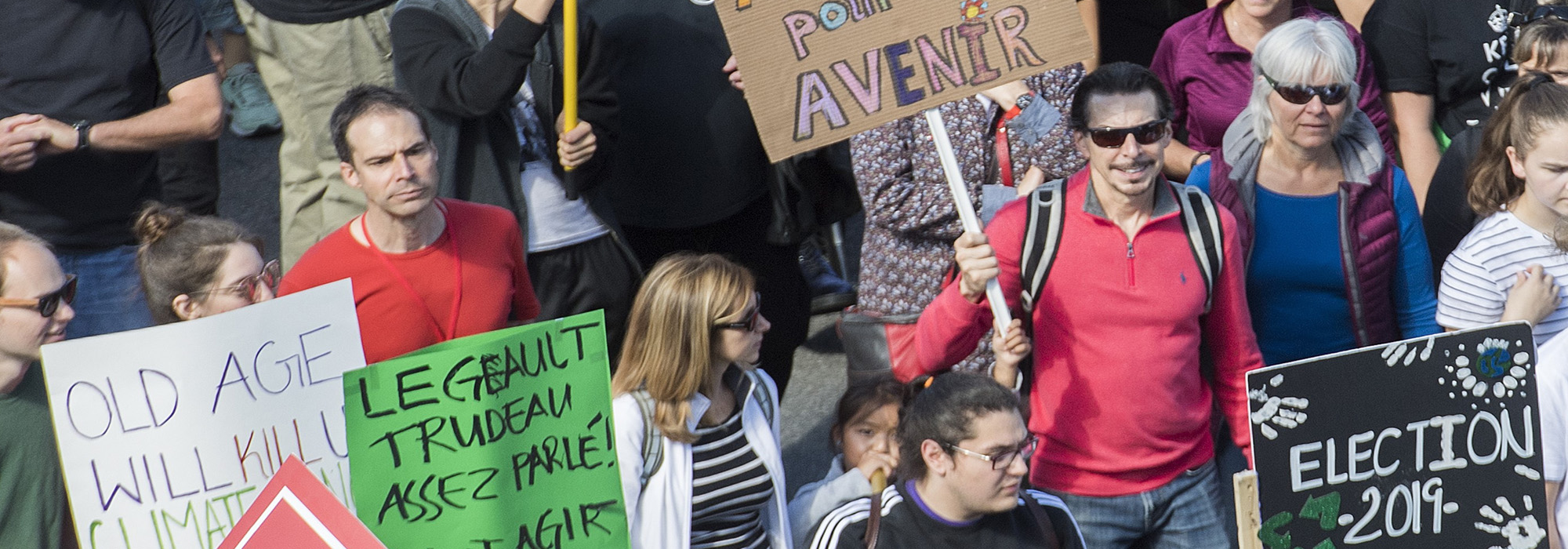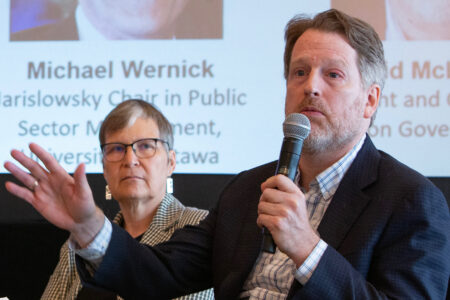
We’ve all heard that there are 12 years left to act to avoid a climate catastrophe. What does this mean for Canada? Are any of the federal parties prepared to confront this challenge? To answer these questions, we first need to examine what that deadline does – and does not – mean.
In the Paris Climate Agreement, the world agreed to limit global warming to well below 2°C but to also pursue efforts to limit warming to 1.5°C. These numbers are not fundamental features of Earth’s climate system. They are policy judgments, politically mediated verdicts on the levels of warming that the world considers dangerous. The lower 1.5°C value arose from years of lobbying by small island states and other developing nations that objected to the less cautious 2°C limit and to being excluded from the conversation.
Because of this disagreement, the Intergovernmental Panel on Climate Change (IPCC) was asked to write a special report specifically about the implications of the lower warming limit. That report, released in 2018, found that the world needs to reduce greenhouse gas emissions by 45 percent by the year 2030 for a two-thirds chance of avoiding 1.5°C warming. Subtract 2018 from 2030, and you get the now famous “12 years left.”
To understand the implications for Canada and our coming election, we can use data straight out of that IPCC report. The IPCC has been able to estimate how much carbon the world has left to burn for a chance at avoiding different levels of warming, and each country’s share of that carbon budget.
The key challenge is deciding how much of the carbon budget each country should have. Should it be based on a country’s present-day emissions, wealthy high-emitting countries like Canada would have more carbon to burn and leave little left for the developing world. For example, following that logic, the US, Europe, Japan and China would alone consume the entire carbon budget for 1.5°C, leaving nothing for the rest of the world. It is not a tenable approach to dividing responsibility.
The most equitable solution is to divide the carbon budget based on population. This way, Canada receives a smaller portion (0.5 percent) but provides a more realistic pathway for the rest of the world. Using this approach, I’ve calculated future CO2 emissions trajectories compatible with Canada’s remaining carbon budget for a two-thirds chance of avoiding 1.5°C, 2°C, 3°C, and 4°C increases in global warming and compared the results with the various party platforms and estimates for emissions in the year 2030 (figure 1). These emissions trajectories are scaled to total greenhouse gas emissions, based on recent data showing that CO2 represents 80 percent of Canada’s greenhouse gas emissions. The dark line represents the mean trajectory for a given warming level, and the shaded area represents the uncertainty range.
According to this analysis, for Canada to do its fair share to avoid 1.5°C of warming, our emissions would need to decrease 96-99 percent below current levels by the year 2030. This sharp drop may look shocking, but it is no surprise to climate experts. The world has already warmed by over 1°C and there is little time left to prevent the additional 0.5°C. Avoiding 1.5°C of global warming is mathematically possible, but not at all realistic without the development and rapid deployment of technologies to pull CO2 out of the air.
The 2°C global warming trajectories for Canada are roughly in line with the Liberal government’s recent proposal to reach net zero emissions by 2050. These trajectories require a 61-67 percent decrease in emissions by the year 2030. Achieving this goal would be unrealistic without substantial reductions from the major emitting sectors of the economy: oil and gas (27 percent of national emissions in 2017) and transportation (24 percent). For example, it is hard to reconcile the approval of any multi-decade infrastructure like pipelines or new mining operations with these emissions trajectories. If oil sands emissions are permitted to reach Alberta’s proposed limit of 100 megatonnes (Mt), that sector would alone represent 36-42 percent of the 2030 target, up from 11 percent today, and leave less space for other sectors of the economy.
Canada’s current and proposed federal policies lie within the range of what’s necessary to avoid 3°C of global warming (“Liberal government policies” in figure 1), when I use modelling from Environment and Climate Change Canada submitted to the United Nations. These policies, which do not include new proposals announced during the election campaign, are not sufficient to meet the federal target of a 30 percent reduction below 2005 levels.
Conservative Leader Andrew Scheer has said his party would stick to the existing federal target. But the Conservative Party’s climate plan document, which contains neither carbon pricing nor regulations, would place Canada in the range of a 4°C (or more) greenhouse gas emissions trajectory. This finding draws from a modelling study by economist Mark Jaccard, described in Policy Options, which estimates that the Conservative plan would lead to a 2 percent increase in emissions from 2015 to 2030. The estimated 2030 emissions are similar to that of Environment and Climate Change Canada’s “without any policies” scenario, included in its submissions to the United Nations. A separate study by EnviroEconomics estimates a 13 percent decrease by 2030 under the Conservative Party plan, in the range of a 3 to 4°C warming trajectory.
The New Democratic Party estimates its plan will reduce emissions by 38 percent below 2005 levels, and is suggesting a target that would fall below the 2°C trajectory. The target chosen by the Green Party (60 percent reduction below 2005 levels) is the closest to being consistent with a 2°C trajectory. However, no party platform includes modelling that shows how these targets would be achieved.
These results paint a stark picture. Despite lofty claims and aspirational goals, there is no Canadian plan consistent with avoiding 1.5°C or 2°C warming. Wherever you are on the political spectrum, the rhetoric of your party on climate change does not match the numbers.
Nonetheless, there are important choices to be made. Despite the scary headlines about 12 years left to act, the message of last year’s IPCC report was not “1.5°C or bust.” The message was that “every action counts.”
The more that Canada and the world can do to reduce emissions, the less the planet will warm, and the less that people will suffer. For example, given our relatively low-carbon electricity system, there is every reason for the federal government to follow in British Columbia’s footsteps and aggressively push towards electric and alternative fuel vehicles. Such actions are important even if they are not sufficient to shift Canada to a 1.5°C or 2 °C trajectory.
The other important way Canada can contribute is by preparing more vulnerable nations for a +1.5°C or more world. If the next government is to be serious about the Paris Climate Agreement, it needs a plan to support the developing nations predicted to suffer the most from the effects of climate change.
By 2020, developed countries are supposed to be mobilizing at least $133 billion per year through grants, loans, and investments to help the developing world respond to climate change. Given our current emissions, Canada’s fair share would be at least CDN$5.5 billion per year, several times the current level.
The longer we delay these actions, the more people will suffer, and the harder the transition will be on Canadians.
NOTE: This article has been corrected to reflect that the New Democrat Party’s climate plan – as distinct from a target – estimates a 38 percent reduction in emissions below 2005 levels.
Photo: People march during a climate strike in Montreal, on Sept. 27, 2019. THE CANADIAN PRESS/Graham Hughes
Do you have something to say about the article you just read? Be part of the Policy Options discussion, and send in your own submission. Here is a link on how to do it. | Souhaitez-vous réagir à cet article ? Joignez-vous aux débats d’Options politiques et soumettez-nous votre texte en suivant ces directives.







